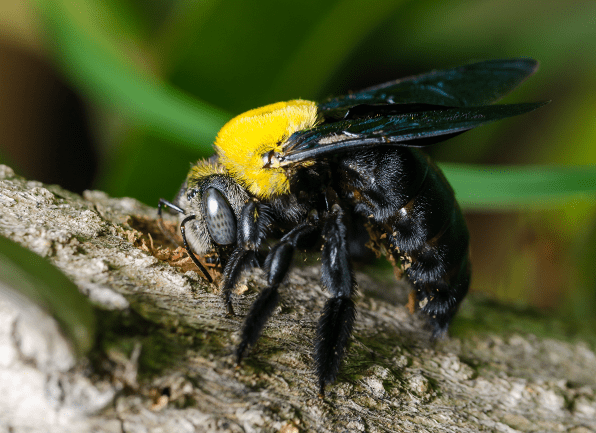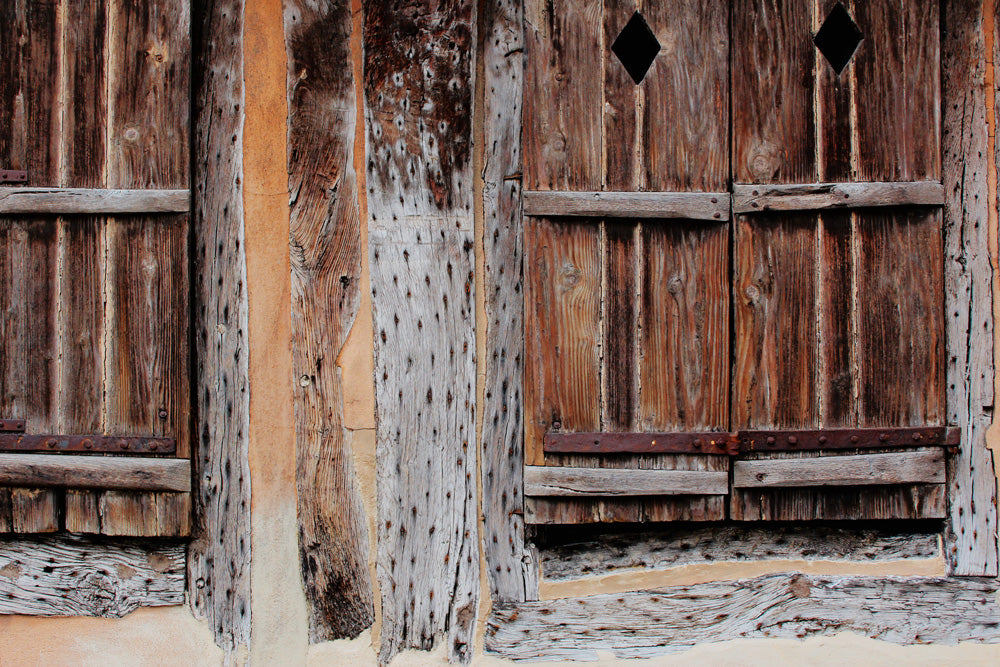Carpenter bees are known for their wood-drilling skills. Unlike honey bees, carpenter bees are solitary bees. This means that they do not make a hive or live in a large colony. Carpenter bee units primarily comprise one female and one male carpenter bee.
Each spring when the new carpenter bees emerge from hibernation, they look for a mate. A female and male pair will choose to mate together. Immediately the female begins the hard task of building a nest and laying eggs.
The female and male carpenter bees have different and important jobs. The female does all of the nest construction. From the moment she chooses the nest location, she is busy creating the perfect tunnel for the eggs she will lay.
The male carpenter bee’s job is to protect the female carpenter and defend their territory. The male generally has the most interaction with humans. Because he needs to defend his family’s territory, he will actually dive-bomb any intruders – including humans! While the male seems intimidating, he is quite harmless. Male carpenter bees cannot sting! His whole defense technique is based on using his large size to frighten off threats.

A male carpenter bee with a white head marking.
The female carpenter bee, on the other hand, can deliver a painful sting. But because she is busy building a home, it’s unlikely you will come across a female. She is usually in the tunnel doing her job. But be careful not to place an unprotected finger down the tunnel, because she will be ready to sting!
Physically, the male and female bees look almost alike. The key difference is the markings on their heads. Males have small white markings, and the females have pure black heads.

(Left) A female carpenter bee's head is mostly black with no markings on her head
Photo Credit: blogs.cornell.edu
(Right) A male carpenter bee is known to have a large light-colored patch on the front of its head.
Photo Credit: blogs.cornell.edu
At the end of the season, both adult male and female carpenter bees hide in their tunnel and die. Their larvae continue the cycle in the spring when they hatch. A new female carpenter bee is likely to choose an existing nest that is not repaired, and will continue drilling more tunnels.








1 comment
Mrs Solo
I must admit that I appreciate the male carpenter bee in particular in my patio area in Virginia. As I encounter unwanted wasps buzzing around me while I try to enjoy the sunshine (I am allergic to stings), I notice the territorial carpenter bee CHASE those wasps away! They’ll chase any insect away (unfortunately even birds), but I’m thankful for them and always welcome them in springtime.
Leave a comment
All comments are moderated before being published.
This site is protected by hCaptcha and the hCaptcha Privacy Policy and Terms of Service apply.